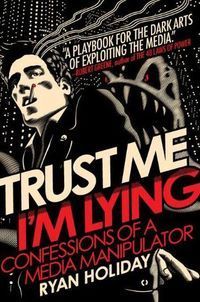David Meerman Scott's Blog, page 82
August 14, 2012
5 ideas for marketing and communications professors success in the classroom
Here in the United States, we’re just about to embark on a new academic year and therefore this is a good time for me to provide some ideas for instructors. If you know a professor who teaches marketing or communications (or a student taking a course in these areas), please pass this on.
It's exciting how far we've come in the area of marketing and public relations education at our colleges and universities worldwide. Just two years ago I found the state of university instruction generally so poor that I wrote a post titled Many marketing and communications professors are criminals. While I'm nowhere near as pessimistic as I was then, the academic world is very resistant to change (especially those with tenure), so there are definitely people who still resist teaching the new rules of marketing.
Here are some ideas I've learned from professors around the world that you might use in your classroom.
1. Care about your students
Take a look at this post from Bill Sledzik, Associate Professor, School of Journalism & Mass Communication, Kent State University: Why we teach: Reflections on 20 years in the classroom.
Bill is someone who understood very early that we're going through a change towards digital. Because he cares about students, he implemented the ideas in the classroom before almost anyone else.
Here's an interview I did with Bill to learn more about what he does so well.
Direct link to Bill Sledzik discuses modern Public Relations education on YouTube.
2. Show, don't tell
One of the best ways to get students active with social media is to use popular platforms as tools in class. For example, you can use a blog as the course syllabus. Twitter could be the way people ask questions outside of class (longer answers could be posted somewhere with a link). Other platforms that could be used include Slideshare for presentations and Pinterest for links.
3. Encourage students to get away from the CV and resume
One of the most important things you can do for students is prepare them for the real world of job search. Starting right from the first year, students need to find internships. Upon graduation, they need full time work. Sadly, the vast majority of marketing and communications students still focus exclusively on the boring old plain text CV.
You should encourage students to start a personal blog as part of class. The blog will serve as a way to get them known to potential employers. For example, here's new Tufts graduate Lindsey Kirchoff's blog.
4. Pick a local nonprofit and do a pro-bono makeover of their online marketing
Having students work together to help a local organization is a good way to actually implement ideas. You can see the results in just one term and it will help a worthy cause.
5. Choose the right classroom materials
My book The New Rules of Marketing and PR, now in its third edition, is used in many hundreds of universities around the world. It's a primary or supplemental text in Marketing courses and Public Relations courses as well as MBA programs, entrepreneurial offerings and journalism classes.
My publishers, John Wiley & Sons, have put together a special resources page, which includes free instructor materials that you can use in class to supplement The New Rules of Marketing and PR. The materials are free, however, you need to register on the site to get access.
Are you a professor? What techniques do you use?
If you’re a student or recent graduate, what were some of the effective ways you were taught?
August 9, 2012
Porter Airlines email marketing trains customers to wait for a sale fare
 Last month I travelled to Toronto to speak at the Microsoft Worldwide Partner Conference and flew via Porter Airlines from Boston.
Last month I travelled to Toronto to speak at the Microsoft Worldwide Partner Conference and flew via Porter Airlines from Boston.
The Porter Airlines flight and service was excellent. I particularly loved flying into Toronto City Airport, which is located on an island right downtown. The travel time from the airport to downtown is significantly less than from the main international airport located outside Toronto.
I'd definitely fly Porter Airlines again. But, next time I would only book a fare that was on sale.
After I booked, I signed up for their email offers. I expected to be educated about Porter and the destinations they fly. I was not.
Instead, on a regular basis, all they’ve been sending me are fare sales. I must have gotten a dozen offers in the several months I've been on their email list.
It sort of annoyed me that I paid more for my flight than I should have. I couldn't switch because the fare sale emails say: "New bookings only".
I get what they are doing. They want to fill seats and it is a lazy marketers drug to run sales on a regular basis. It sort of reminds me of how some companies use Groupon, which I wrote about in this post: The dark side of Groupon.
Offering frequent fare sales trains customers to wait for a better price on Porter Airlines. It also annoys customers like me who (stupidly) paid too much.
Porter Airlines can do email marketing better
I keep waiting to see emails from Porter Airlines talking about their other destinations. Why not tell me about Moncton? Maybe I'd like to go but I don't know anything about it. Or maybe Porter could provide ideas on why I should return to Toronto with my family. Or they could introduce their people "This is Captain Smith." But they don't do anything like this. It's all about the sale.
Your email marketing should be used to build a long-term relationship with your customers. You should educate and entertain them.
There's a lot more to email marketing than pimping a sale price.
August 7, 2012
Confessions of a Media Manipulator
 Last week, John Jantsch hosted an awesome video debate called Media Manipulation – fact or fiction – a frank conversation.
Last week, John Jantsch hosted an awesome video debate called Media Manipulation – fact or fiction – a frank conversation.
The discussion featured Ryan Holiday, author of Trust Me I'm Lying – Confessions of a Media Manipulator debating Peter Shankman, VP, Small Business Evangelist at Vocus (and founder of HARO). I was also on hand together with Shel Holtz to jump in now and then with comments and questions.
It was a very lively discussion!!
PR Stunts for fun and profit
Here's some backstory: Earlier this month Ryan released his book which received a great deal of coverage mainly because of the clever PR stunt he pulled to get attention. He used HARO (Help a Reporter Out) to respond to queries from journalists about such things as being an insomniac, a vinyl collector, a boating expert, and so forth, (none of which he actually was) and getting quoted by ABC News, CBS, The New York Times, and other news organizations.
Here is a good article on Poynter that provides background on the stunt: Telling the truth about media manipulator Ryan Holiday.
Here is our debate, which is well worth taking 45 minutes to watch.
Direct link to Media Manipulation – fact or fiction on YouTube.
In the debate, Peter was very critical of Ryan's use of HARO because he misused the service. In turn Ryan argued that HARO should vet the reporters and PR people who use HARO. I have to disagree with both Peter and Ryan. I think the way Ryan used the service certainly did prove a valuable lesson. However, having used HARO myself to find sources for stories I’ve written, of course I am going to vet the source. As I said in the debate, HARO shouldn’t get involved in fact checking its users any more than Monster.com should fact check the millions resumes on its platform.
That reporters from A-list media like ABC News and the New York Times didn't do a simple Google search to learn that the "Ryan Holiday" who they were about to quote in a story wrote a book called Trust me I'm Lying is strange!
Trust Me I'm Lying
I've read some of Ryan’s book Trust me I'm Lying (but not all because I wanted to get this post out). I find the book to be a valuable resource for PR people and journalists alike because he has clearly found some details about how today’s media works that you should know.
If you're engaging in Newsjacking (and I hope you are) there are some insights in Ryan's book that will help. But note that unlike Ryan's techniques, Newsjacking does not rely on manipulation. It works because of a knowledge about how today’s real time media operates and that’s what Ryan outlines in his book.
However, I do not agree with Ryan's techniques. Lying about who you are just to prove a point is not appropriate for anyone who wants to do business in the future. Now and forever, whenever anyone Google’s Ryan Holiday, they will learn he is a liar. Would you hire him? Would you work for him?
Sometimes Ryan used a fake name and sometimes his real name to alert the media to stores, which he himself planted. All of this was to expose how online media really works and I think it was largely successful in proving his point and generating interesting anecdotes that we can learn from.
While he was pulling off his media manipulation that he talks about in the book, Ryan was director of marketing at American Apparel (where he still works today). American Apparel is a public company listed on the American Stock Exchange. When I asked Ryan if his employers had knowledge of his stunts, he said yes. I find this fascinating.
An aspect of his manipulation was that he not only seeded (sometimes false) stories to online media outlets, those outlets also carried his company’s advertising. It was a surprising revelation about the porous wall between the business side and the advertising side of online media.
Watch the 45-minute debate and if you want to learn more, read Ryan's book. Sure, there is a lot of manipulation going on here, but there are also lessons to learn for those of us who don’t lie.
What do you think?
August 3, 2012
Awesome near real-time AT&T television commercial breaks through Olympics ad clutter
In a world of boring advertising campaigns, real-time marketing & PR gets noticed.
 I'm lacking sleep this week from watching the Olympic coverage here in the US on NBC because I'm staying up past my normal bedtime!
I'm lacking sleep this week from watching the Olympic coverage here in the US on NBC because I'm staying up past my normal bedtime!
While I like checking out snippets of many events, I really love swimming. I swam on a club team as a kid, my daughter was a competitive swimmer for ten years and while she was swimming I was a national level swimming official.
I generally hate television advertising. The "campaign" mode of the typical TV commercial means the ads are shot way in advance. Because they typically involve big budget filming, the sponsor puts the same damned ad on again and again. Boring.
While most of AT&T's ads fall into the "not interested – fast forward" category for me, there have been two near real-time ads involving swimming that astonished me.
 The ads showed a young person watching the actual footage of a world record swim from the day before on a mobile. You see the NBC clip of the world record finish and hear the actual commentary. Then you realize the young person is a swimmer and he or she is writing the new world record time with the word "goal" on a whiteboard at home.
The ads showed a young person watching the actual footage of a world record swim from the day before on a mobile. You see the NBC clip of the world record finish and hear the actual commentary. Then you realize the young person is a swimmer and he or she is writing the new world record time with the word "goal" on a whiteboard at home.
Early in the week the AT&T ad was Ryan Lochte's world record 400 IM where he beat Michael Phelps. Here is the AT&T Ryan Lochte ad.
Last night the AT&T ad was even better because Rebecca Soni broke the 200 breaststroke world record the day before in the semi-finals. The near real-time ad ran the next day immediately after the finals which she won beating her own world record. Here's the AT&T Rebecca Soni ad.
Awesomeness!
Rea Ann Fera at Fast Company wrote an excellent article How AT&T integrated Olympic results into its ads so darn fast that explained the process of how the ads were created by agency BBDO.
Here's how it was done as reporteed by Fera: Three sports were selected as the campaign’s focus--swimming, gymnastics, and track and field. BBDO then created six versions of the commercial in advance, two for each sport alternately featuring a male or female athlete, with hundreds of different endings to account for a predicted range of winning times. AT&T worked with longtime broadcasting partner NBC to arrange for access to the footage within unusually quick turnaround times so that they could create a campaign that would stand out from the hailstorm of sponsored messages. Once one of the athletes pegged as likely to win is competing, a team from BBDO sits in London and waits. If the athlete performs well, it’s go time. A winning result means that footage has to be selected, sent to London-based post house Absolute for integration, the pre-canned shot with the winning time has to be selected and edited together. It’s then sent to NBC and the USOC for approvals and on air within 24 hours of the win. It’s a cycle AT&T is able to repeat up to five times for five winning athletes.
You've got to see the ads. Here are links to the ads on the NBC site:
Congratulations Ryan Lochte
Congratulations Rebecca Soni
Real-Time is a Mindset.
August 2, 2012
Twitter Political Index

Yesterday, Twitter launched its Twitter Political Index to track enthusiasm for Barack Obama and Mitt Romney in the run-up to the November US Presidential election.
The Twitter Political Index is a daily measurement that evaluates the sentiment of Twitter users feelings about the candidates based on an estimated two million Twitter mentions of the candidates in a given week relative to more than 400 million tweets sent about other topics each day.
This is a great example of Crowdsourcing, which involves taking a task usually performed by one or a few people (in this case doing political research) and distributing among a crowd of people—outsourcing it to a crowd—via online social networks.
Tapping the crowd to learn about buyers (and voters)
I'll be particularly interested to see how the Twitter Political Index changes when one or the other candidate has a success (a great speech for example) or a public gaffe. And it will be fascinating to learn on election day if global Twitter users are a good proxy for the American electorate.
The techniques used by the Twitter Political Index are available to companies using products like those from Radian6 to gauge the sentiment around products and companies. It is a fascinating way for marketers and PR pros to mine a huge amount of data.
For more information on the Twitter Political Index, USA Today has a good analysis Twitter index tracks sentiment on Obama, Romney.
July 30, 2012
In our digital world analog communications breaks through the clutter
 As more and more people use social networks to communicate and companies use online channels to market, its important to remember good old analog.
As more and more people use social networks to communicate and companies use online channels to market, its important to remember good old analog.
When we get hundreds of email messages a day, taking the time to hand write a thank you note and put it in an envelope with a stamp and mail it shows you care.
When everyone says "your business is important to us" and then puts you into phone tree hell when you call, a personally answered telephone is a surprising bonus.
I've been thinking about how quickly digital communications has become a dominate medium and how, sometimes, the good old analog approach works.
The best companies seem to have a combination of both excellent online and offline marketing and communications.
It's not just marketing either. With the rise of Electronic Dance Music, a combination of new EDM techniques with good old analog music makes for an great tunes.
Earlier this month I attended the terrific Gathering of the Vibes music festival and say the analog and digital music worlds collide in some fascinating ways. I wrote about it for the Huffington Post: Electronic Dance Music and Jam Bands Tap the Same Fan Vibe.
One musician who sits squarely in the middle of digital and analog music is Mickey Hart, percussionist for the Grateful Dead from 1967 until the band stopped touring upon Jerry Garcia's death in 1995. He brought his Mickey Hart Band to Gathering of the Vibes. His newest album, Mysterium Tremendum, fuses elements of the jam band scene he lived in for decades with today's electronic music.
"I live in two worlds," Mickey told me. "One, the archaic world of drums and drumming -- I'm strongly embedded in it, I love striking a membrane and hearing its report and playing real rhythm. And I have one foot firmly planted in the digital domain. This is such a wonderful time where science and art are now handshaking and becoming one. I am embedding the electronic worlds in which I feel comfortable into my music. I'm into pulsing and throbbing. What you're seeing now is a wonderful groundswell of binary and acoustic information coming together into new music."
You can see Mickey riffing on this theme for me in this video. He had just finished his set and was quite animated, speaking for four nonstop minutes on my question of digital vs. analog music. You might notice beer bottles around Mickey. He had set up 70 beer bottles for Jerry Garcia's 70th birthday and had been playing them with his drumsticks.
Direct link to Mickey Hart on fusing percussion and digital to make music on YouTube.
Like Mickey Hart and his fusing of analog and digital music, how are you fusing analog and digital marketing and communications?
Photo: STS9 at Gathering of the Vibes, July 21. 2012. Credit: Richard Gastwirt
July 26, 2012
The secret to awesomely successful B2B marketing
The secret is to communicate to people.
Many marketers make the mistake of treating business-to-business marketing as somehow different. For some reason, marketers turn off their brains when they are trying to reach, say, Chief Information Officers in a way they never would when they are trying to reach, say, surfers. They vague up the language with mission-critical, cutting-edge, best-of-breed gobbledygook. They get all serious, forgetting to create something engaging and interesting. They prattle on about their products instead of educating and entertaining.
Many people ask me about B2B marketing as if it is different from "regular" marketing.
No, B2B is not different.
In all marketing, your job is to understand your existing and potential customers and create compelling experiences for them!
July 24, 2012
Your employees as a terrific marketing asset
 I really enjoy doing business with companies whose employees are friendly and who treat me with respect. Isn't it different than those companies whose people who go through the motions, treating you like you're intruding on their life, counting the hours till quitting time?
I really enjoy doing business with companies whose employees are friendly and who treat me with respect. Isn't it different than those companies whose people who go through the motions, treating you like you're intruding on their life, counting the hours till quitting time?
Late last year I travelled to Lapland, in northern Finland to experience what it was like above the Arctic Circle in wintertime (fascinating!). On the first leg of the return trip, we traveled via Finnair from Ivalo to Helsinki. As we climbed up the stairs, I composed an awesome photo in my mind of the plane's cockpit with the terminal in the background. I thought it would be a great way to show what midday looks like in a place where the sun doesn't rise in mid-winter.
I quickly got my iPhone out for a snap and at that moment the Captain turned and saw me.
Finnair's friendly pilots
What could the Captain have done? Well, he could have made a signal indicating "no photos". He could have pretended to not see me and turned away. Or he could have simply waved hello.
But this Captain took a moment to open the cockpit window and flash a thumbs up and smile. Fortunately, I got the shot, which I tweaked with Instagram. When I tweeted it, @Finnair social media people responded in real-time. Perfect.
Employees as a marketing asset
Most pilots do what the handbook tells them to and nothing more. They say: "Your business is important to us" over the loudspeaker at the moment prescribed and that's it.
It's not just pilots of course. In all businesses, many employees just don't care.
I think that a culture of caring comes from the top. It starts with how the CEO treats employees and customers. It comes from how people are hired, what skills are valued and how people are promoted.
No matter how such a culture develops, it is a terrific marketing asset.
July 18, 2012
How to use Wikipedia for marketing and PR
 Late last week, Alan Smith alerted me via Twitter to a new guide created by the Chartered Institute of Public Relations to help public relations professionals understand Wikipedia.
Late last week, Alan Smith alerted me via Twitter to a new guide created by the Chartered Institute of Public Relations to help public relations professionals understand Wikipedia.
The guide, Wikipedia Best Practice Guidance for Public Relations Professionals, is a free PDF download with no registration required.
This is certainly a subject that interests marketers and PR pros because Wikipedia is among the top ten most visited sites on the Web. When there is a Wikipedia article on a topic that you search on (and there are currently just over 4 million articles in English), I'm sure you’ve noticed that article usually appears as one of the top few results, frequently in the number one position.
Besides the CIPR guide, you might check out my interview with Colin Warwick How to create and edit articles for Wikipedia. Colin, a Product Marketing Manager at Agilent Technologies who writes the popular Signal Integrity blog is my go-to resource for all things Wikipedia.
There have been a number of very public dust ups when companies try to influence a Wikipedia page without following the site's guidelines and policies. For example, this one from Stella Artois beer.
The CIPR guide was created with the help of the wikipedian community - a very smart move.
"The Wikipedia work has been one of the most interesting projects I’ve ever been involved in," says Phil Morgan, Director of Policy and Communications, Chartered Institute of Public Relations . "The process of engagement with the Wikipedia community has been an eye-opener. We set out to build mutual understanding and the outcomes have challenged the assumptions that some within PR hold. No bad thing." Phil also says that the guide is a work in progress and will be updated. There is a meeting of the group of members who worked on the project this evening to discuss sustaining the engagement and they intend to develop future versions of the guidance as things change.
How to use Wikipedia for marketing and PR
The CIPR guide will get you familiar with Wikipedia's philosophies, guidelines and policies. While there are many more details in the guide, as a basic introduction, Wikipedia has three core content policies. It is imperative PR professionals understand these fully. Here is that section from the CIPR Guide:
1. Neutral point of view – All Wikipedia articles and other encyclopaedic content must be written from a neutral point of view, representing significant views fairly, proportionately and without bias. Fundamentally, where there is a contentious issue associated with a topic, Wikipedia content should be a good reference for the debate. In a few words, neutrality means this: report the debate, don't take part in it.
2. Verifiability – Material challenged or likely to be challenged, and all quotations, must be attributed to a reliable, published source. The threshold for inclusion in Wikipedia is verifiability, not truth — meaning, in this context, whether readers are able to check that material added to Wikipedia has already been published by a reliable source, not whether we think it is true.
3. No original research – Wikipedia does not publish original thought: all material in Wikipedia must be attributable to a reliable, published source. Articles may not contain any new analysis or synthesis of published material that serves to advance a position not clearly advanced by the sources.
Download Wikipedia Best Practice Guidance for Public Relations Professionals for free with no registration.
July 16, 2012
Look at how far Marketing & PR has come and consider where we are going
 In early 1995, while living in Hong Kong, I received a floppy disk copy of Netscape Navigator version 1.0 and with my dial up connection got onto the Web. Being a collector (my family might say “pack rat”) I saved the disk.
In early 1995, while living in Hong Kong, I received a floppy disk copy of Netscape Navigator version 1.0 and with my dial up connection got onto the Web. Being a collector (my family might say “pack rat”) I saved the disk.
I remember that time well because zero percent of my marketing and PR colleagues were online. At the time, nobody was tracking the number of Internet users, but IDC says it grew to 16 million by December 1995.
A few years later I created my first personal site and soon after started sending search engine optimized press releases for lead generation on behalf of NewsEdge, the company I was employed by at the time. Reaching people when they were looking for what we had to offer was like magic.
Marketing and PR today
IDC says there are over 2 billion Internet users in 2012.
Consider what we can do today with a smartphone such as an iPhone, fewer than two decades after Netscape 1.0. We can instantly reach anyone on the planet by creating real-time content such as video. Amazing.
The future
We're making up the rules now for what the future holds. Imagine the progress over the next decade or two? Incredible.
I'm bullish on marketing and public relations in the years to come. Not only is it easier to reach buyers than at any time in the past, it's also more fun.




